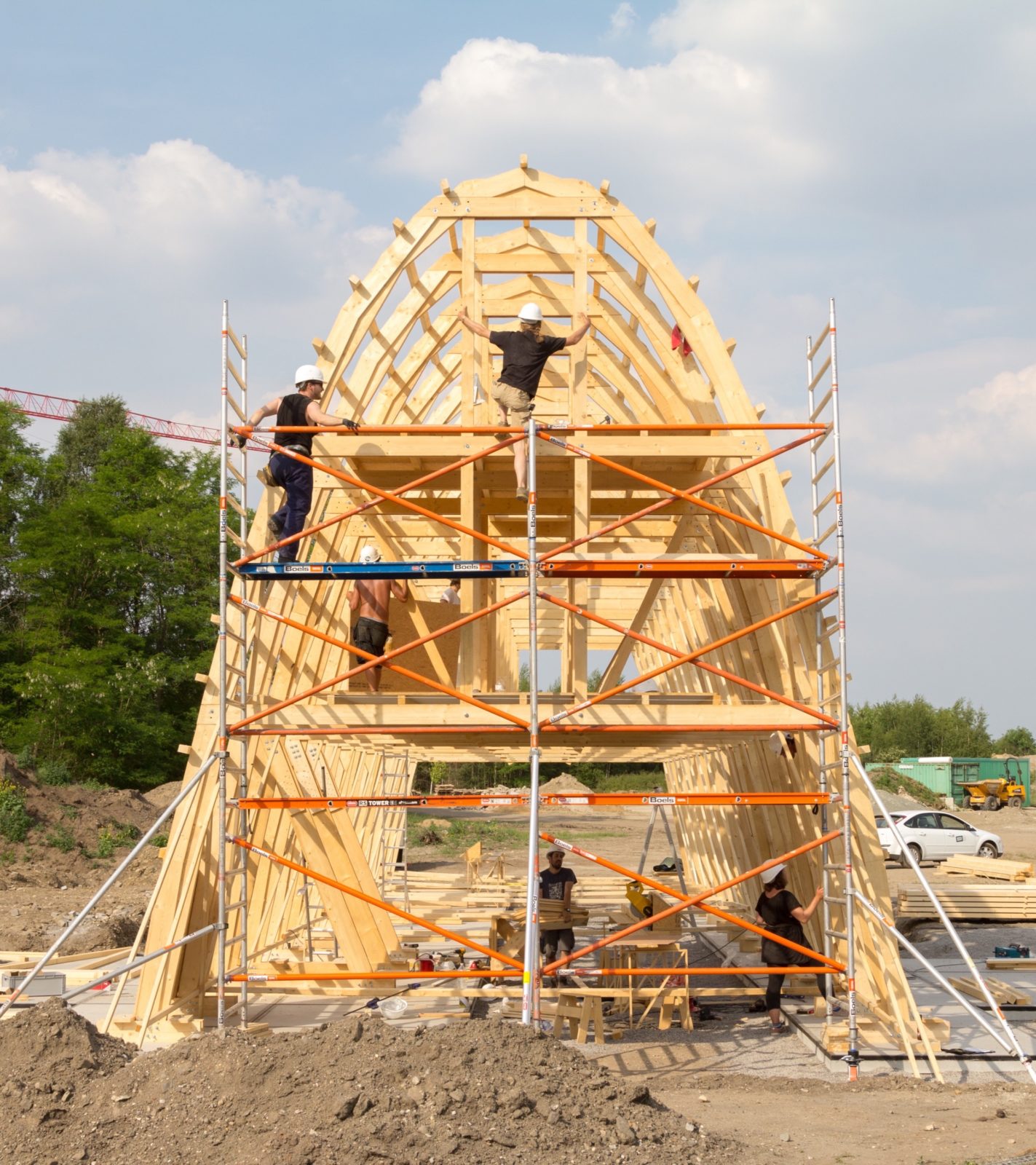Berlin, 10.12.2019
ConstructLab Studio, Urbanstraße 64

CONSTRUCTLAB: AGORAPHILIA
FRANCESCA GOTTI: To start with…how does a project start?
MASCHA FEHSE: If we talk about what initiates a project, there is usually a situation that somebody has created; it comes more from the perspective of experience, a conflict of uses. There can be too many uses or lack of uses, there can be a question, or things that draw attention.
ALEXANDER RÖMER: Somehow, we have to develop situations where we detect problems or conflict, we can formulate them and put them into an idea or a structure that allows us to initiate the whole process. Very important is the collaborative process: to gather people around the conflict or the situation. Often, this happens in our project with a starting story, a sort of narrative that allows us – in a very visual imaginary way – to put the problem aside, but to formulate something which a lot of people can be part of. And then it develops and those who are initiating are also aware of the context, of the reality they want to tackle. It’s a parallel process: the narrative develops and maybe modifies, it changes colour; on the other hand, the reality is also observed and analysed.
FG: We could say that where there are conflictual energies and actions you try to “calm the waters” using the narration as a guide…
AR: We do so to get constructive, in a way. These kinds of projects often emanate from very controversial situations and energy that has a strong oppositional aspect. There is an opposition against something and being against something requires putting a lot of energy into one’s arguments: in our society it is so important to be critical, but it is also important to switch at a certain point and transform this energy into something constructive, to make a statement. Acknowledging that the statement will not be without any doubt. It’s a bit like a political party that has to switch from opposition to government.
MF: It is also about mediating between people and needs, and space is an actor as well in this. What we do is push the dialogue, which is not the dialogue around the table, but around how we can get in contact between a space – that is partially neglected or has some potential – and people who have a vision but maybe don’t know how to formulate this vision in the space. The core is this dialogue between action, space and people.
FG: Mediation is a key aspect and there are also different elements which come at different times, which affect this process: in this sense, what are the limits from a financial, legislative or other point of view?
MF: Limits and constraints are always very specific to each project, sometimes they help us find a direction. The biggest limit is often human energy: the projects we do are not the result of an industrial process that we can replicate again and again and produce on a massive scale; they get saturated, they have a limit on their own. Once, I heard a woman working in an urban garden in Berlin saying that it wasn’t a project she could do three times in her life. These kinds of projects demand a lot of energy and we have to understand how much energy we can use: this is a good rule; it is the same for other urban or architectural projects, where there are big investments in materials, energy and money and they have to be useful at the end. It is a good controlling mechanism.
(...)
Extract from the interview "A talk with Construct Lab: Agoraphilia." Full text available in the book "The Design of Tactics: Critical Practices for Public Space Re-Activation," forthcoming.
CONFLICT OF USES
Negotiation practices between subcultural groups sharing the same place happen through a system of exchange situations: this scenario is described as a “trading zone.” In this process, an important role is played by those elements that can be accepted and assimilated by all the parts and yet maintain their identity: these entities are called “boundary objects.” In this sense, place-making can be considered as a “trading zone” to negotiate spatial conflicts. (Balducci, Alessandro, and Raine Mäntysalo. 2013. Urban Planning as a Trading Zone. London: Springer.)
NARRATIVE
The Arch (Genk, BE, 2017)
A living support structure conceived to welcome the public; a support structure as a building tool that stabilises a construction during its installation, also used in the mines to create the deepest tunnels. In the same sense, it can be applied metaphorically as a social, artistic and community-shaping tool to be a support and catalyst in a first phase of appropriation. In connection with the research activities already happening and to be established at Thor Park, an applied research laboratory has been proposed that is situated somewhere between artistic experimentation and public research.
MEDIATING
Der ESSENtisch (Essen, DE, 2017)
Curators Modulorbeat have been commissioned to renovate and reactivate the public space by addressing specific and inclusive actions. ConstructLab has been invited to intervene on the public space of the square together with atelier LeBalto. The table can vary in length thanks to a simple mechanism that allows many tables to be put together; the ESSENtisch starts in front of the building, embracing in its path a tree, a pole and a column of the patio of the former Haus der Begegnung. Crossing the garden in the middle, it turns itself into a picnic table, where people can use the grass as a bench.